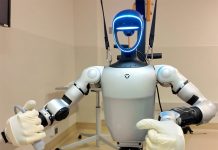
Have you ever watched a sea turtle glide gracefully in the water and wondered how they do it?
These animals have a unique way of moving both in water and on land, making them incredibly adaptable.
Scientists are always interested in understanding how different creatures move, so they can make robots that mimic them.
Yasemin Ozkan-Aydin, a professor and robotics expert at the University of Notre Dame, has been very curious about sea turtles.
She says that the way they look, the shape of their flippers, and the different ways they move make them very special. Understanding how turtles adjust their movement to travel through different environments can help scientists design more adaptable robots.
Together with two students, Nnamdi Chikere and John Simon McElroy, Yasemin created a robot that looks and moves like a sea turtle.
They tested their “robo-turtle” at their university. Just like a real sea turtle, the robot uses its front flippers to move forward and its back flippers to change direction.
To build this robot, they used a mix of technology and biology. The body of the robot is oval, just like a turtle, and has four flippers that can be controlled using a radio. Inside, there is a special control unit, sensors, and a battery.
The robot’s body and the parts that connect the flippers were made with a 3D printer, and the flippers themselves were made from silicone. This makes them both flexible and strong, just like a turtle’s real flippers.
What’s interesting is that Yasemin and her team didn’t focus on just one type of sea turtle. They looked at many different species to understand their movements and then took the best parts from each one to design their robot.
They were particularly inspired by baby sea turtles. If you didn’t know, these tiny creatures face many dangers. When they hatch from their eggs on the beach, they need to make a dangerous journey to the ocean.
They have to avoid birds that want to eat them, and often, they get confused by lights and obstacles on the beach. Sadly, out of every thousand baby turtles, only one usually grows up.
This is where the robot comes in! Yasemin hopes that their “robo-turtle” can guide these baby turtles safely to the ocean.
By leading the way, the robot can help reduce the dangers these little turtles face during their critical first journey.
In short, by studying and imitating nature, scientists are not only learning to create better robots but also finding ways to help and protect our planet’s precious wildlife.
Follow us on Twitter for more articles about this topic.



